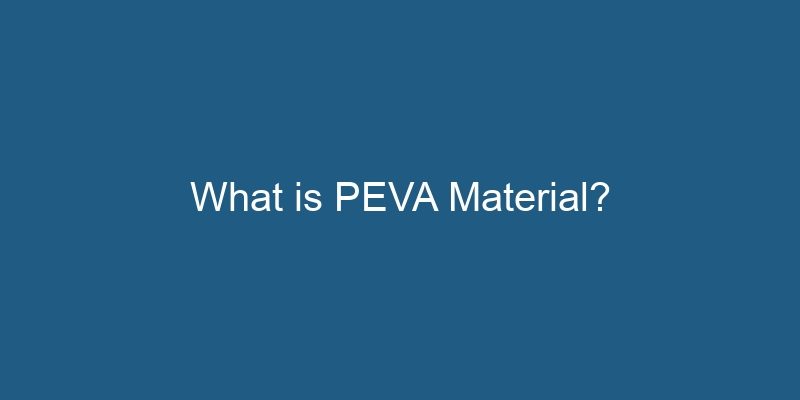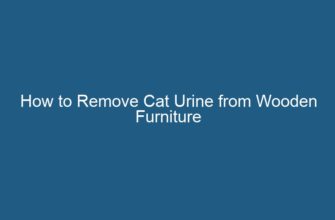PEVA, which stands for Polyethylene Vinyl Acetate, is a type of plastic material that has gained popularity in recent years. It is commonly used in various industries, including packaging, textiles, and construction. PEVA is known for its versatility, durability, and eco-friendly properties. In this article, we will explore the various aspects of PEVA material, including its composition, characteristics, applications, and environmental impact.
- Composition of PEVA Material
- Characteristics of PEVA Material
- Applications of PEVA Material
- 1. Packaging
- 2. Textiles
- 3. Construction
- 4. Medical and Healthcare
- 5. Stationery and Office Supplies
- Environmental Impact of PEVA Material
- 1. Recyclability
- 2. Non-toxicity
- 3. Biodegradability
- 4. Energy Consumption
- 5. Disposal
- Frequently Asked Questions (FAQs)
- 1. Is PEVA material safe for food packaging?
- 2. Can PEVA material be used for outdoor applications?
- 3. Can PEVA material be recycled?
- 4. Does PEVA material emit any harmful odors?
- 5. What are the alternatives to PEVA material?
- 6. Can PEVA material be used in the automotive industry?
- 7. Is PEVA material biodegradable?
- 8. Can PEVA material be used for medical purposes?
- 9. Does PEVA material have any negative impact on the environment?
- 10. Can PEVA material be used for insulation purposes?
- Conclusion
Composition of PEVA Material
PEVA is a copolymer, meaning it is made up of two or more different monomers. In the case of PEVA, it is composed of polyethylene and vinyl acetate. Polyethylene is a thermoplastic polymer that is widely used in many applications due to its excellent chemical resistance and high strength. Vinyl acetate, on the other hand, is a colorless liquid that is used as a raw material in the production of various polymers, including PEVA.
The combination of polyethylene and vinyl acetate in PEVA results in a material that exhibits the desirable properties of both components. Polyethylene provides PEVA with its strength and durability, while vinyl acetate enhances its flexibility and softness. The specific ratio of polyethylene to vinyl acetate can vary depending on the desired properties of the final product.
Characteristics of PEVA Material
PEVA material possesses a range of characteristics that make it suitable for various applications. These characteristics include:
- Waterproof: PEVA is highly resistant to water, making it an ideal material for products that need to be protected from moisture.
- Non-toxic: PEVA is considered safe for use in consumer products, as it does not contain harmful substances such as phthalates or lead.
- Soft and flexible: PEVA has a soft and flexible texture, which allows it to be easily molded and shaped into different forms.
- Chemical resistance: PEVA is resistant to many chemicals, including acids, alkalis, and solvents, making it suitable for applications where exposure to such substances is common.
- UV resistance: PEVA has good resistance to ultraviolet (UV) radiation, which makes it suitable for outdoor applications that require protection from the sun’s harmful rays.
- Low odor: PEVA material has a low odor compared to other plastics, making it suitable for products that come into close contact with humans, such as shower curtains and baby products.
- Recyclable: PEVA is recyclable, which means it can be processed and reused to create new products, reducing waste and environmental impact.
Applications of PEVA Material
PEVA material is widely used in various industries due to its versatile nature. Some of the common applications of PEVA include:
1. Packaging
PEVA is commonly used in packaging materials, such as bags, pouches, and wraps. Its waterproof and chemical-resistant properties make it an excellent choice for protecting products from moisture and external contaminants. PEVA packaging is commonly used for food, pharmaceuticals, electronics, and other consumer goods.
2. Textiles
PEVA is used in the textile industry for various purposes. It is commonly used as a coating for fabrics to make them water-resistant or waterproof. PEVA-coated fabrics are commonly used in raincoats, shower curtains, tablecloths, and outdoor furniture covers. The soft and flexible nature of PEVA also makes it suitable for making shower caps, aprons, and other protective clothing.
3. Construction
PEVA material is also used in the construction industry for various applications. It is commonly used as a vapor barrier in building insulation to prevent the passage of moisture. PEVA films or sheets are also used as temporary protective coverings during construction to protect surfaces from damage and dirt.
4. Medical and Healthcare
PEVA is widely used in the medical and healthcare industry for its non-toxic and hygienic properties. It is commonly used in the production of medical gloves, aprons, and gowns. PEVA films are also used as sterile packaging for medical devices and instruments.
5. Stationery and Office Supplies
PEVA material is used in the production of various stationery and office supplies. It is commonly used as a cover material for notebooks, binders, and folders. PEVA pouches and envelopes are also commonly used for storing and organizing documents.
Environmental Impact of PEVA Material
PEVA material is considered to be more environmentally friendly compared to some other types of plastic materials. Here are some key points regarding the environmental impact of PEVA:
1. Recyclability
PEVA is recyclable, which means it can be processed and reused to create new products. Recycling PEVA helps reduce the demand for virgin materials and minimizes waste. However, it is important to note that the availability and accessibility of PEVA recycling facilities may vary depending on the region.
2. Non-toxicity
PEVA material is free from harmful substances such as phthalates or lead, making it safer for human health and the environment compared to some other plastics.
3. Biodegradability
While PEVA is not biodegradable, some manufacturers have developed biodegradable variants of PEVA that can break down more easily in certain conditions. These biodegradable PEVA materials can help reduce the environmental impact of plastic waste.
4. Energy Consumption
The production of PEVA material requires energy, and the extraction of its raw materials, such as polyethylene and vinyl acetate, has an associated environmental impact. However, compared to some other plastics, PEVA production generally requires less energy.
5. Disposal
Proper disposal of PEVA material is important to minimize its environmental impact. While PEVA is not biodegradable, it can be recycled or incinerated in specialized facilities that can capture and manage the resulting emissions. Improper disposal, such as throwing PEVA products into regular waste bins, can contribute to plastic pollution.
Frequently Asked Questions (FAQs)
1. Is PEVA material safe for food packaging?
Yes, PEVA material is considered safe for food packaging. It does not contain harmful substances and is resistant to chemicals, making it suitable for storing food items.
2. Can PEVA material be used for outdoor applications?
Yes, PEVA material has good UV resistance and is suitable for outdoor applications that require protection from the sun’s harmful rays.
3. Can PEVA material be recycled?
Yes, PEVA material is recyclable. However, the availability of PEVA recycling facilities may vary depending on the region.
4. Does PEVA material emit any harmful odors?
No, PEVA material has a low odor compared to other plastics, making it suitable for products that come into close contact with humans.
5. What are the alternatives to PEVA material?
Alternatives to PEVA material include PVC (Polyvinyl Chloride), EVA (Ethylene Vinyl Acetate), and TPU (Thermoplastic Polyurethane), each with its own set of characteristics and applications.
6. Can PEVA material be used in the automotive industry?
Yes, PEVA material is used in the automotive industry for various applications, such as protective covers and seat covers.
7. Is PEVA material biodegradable?
No, PEVA material is not biodegradable. However, some manufacturers have developed biodegradable variants of PEVA that can break down more easily in certain conditions.
8. Can PEVA material be used for medical purposes?
Yes, PEVA material is commonly used in the medical and healthcare industry for the production of gloves, aprons, gowns, and sterile packaging.
9. Does PEVA material have any negative impact on the environment?
While PEVA material is considered more environmentally friendly compared to some other plastics, its production and disposal still have an associated environmental impact. Proper recycling and disposal practices are important to minimize this impact.
10. Can PEVA material be used for insulation purposes?
Yes, PEVA material is commonly used as a vapor barrier in building insulation to prevent the passage of moisture.
Conclusion
PEVA material, or Polyethylene Vinyl Acetate, is a versatile and durable plastic material that finds applications in various industries. Its composition of polyethylene and vinyl acetate results in a material that is waterproof, non-toxic, soft, flexible, and chemically resistant. PEVA material is commonly used in packaging, textiles, construction, medical, and stationery industries. It has a relatively low environmental impact compared to some other plastics, thanks to its recyclability and non-toxicity. However, proper recycling and disposal practices are crucial to minimize its environmental impact. Overall, PEVA material offers a sustainable option for various applications while maintaining its functionality and performance.










